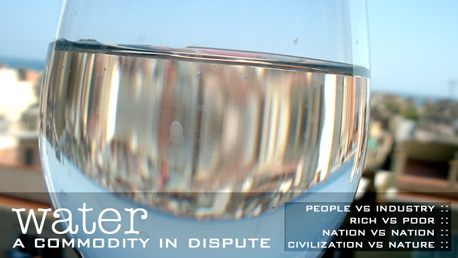
Emily Arnold & Janet Larsen, EPI :: The global consumption of bottled water reached 154 billion liters (41 billion gallons) in 2004, up 57 percent from the 98 billion liters consumed five years earlier. Even in areas where tap water is safe to drink, demand for bottled water is increasing—producing unnecessary garbage and consuming vast quantities of energy. Although in the industrial world bottled water is often no healthier than tap water, it can cost up to 10,000 times more. At as much as $2.50 per liter ($10 per gallon), bottled water costs more than gasoline. [Feb. 2006]
The United States is the world’s leading consumer of bottled water, with Americans drinking 26 billion liters in 2004, or approximately one 8-ounce glass per person every day. Mexico has the second highest consumption, at 18 billion liters. China and Brazil follow, at close to 12 billion liters each. Ranking fifth and sixth in consumption are Italy and Germany, using just over 10 billion liters of bottled water each.
[...] In contrast to tap water, which is distributed through an energy-efficient infrastructure, transporting bottled water long distances involves burning massive quantities of fossil fuels. Nearly a quarter of all bottled water crosses national borders to reach consumers, transported by boat, train, and truck. In 2004, for example, Nord Water of Finland bottled and shipped 1.4 million bottles of Finnish tap water 4,300 kilometers (2,700 miles) from its bottling plant in Helsinki to Saudi Arabia.
Saudi Arabia can afford to import the water it needs, but bottled water is not just sold to water-scarce countries. While some 94 percent of the bottled water sold in the United States is produced domestically, Americans also import water shipped some 9,000 kilometers from Fiji and other faraway places to satisfy the demand for chic and exotic bottled water.
Fossil fuels are also used in the packaging of water. The most commonly used plastic for making water bottles is polyethylene terephthalate (PET), which is derived from crude oil. Making bottles to meet Americans’ demand for bottled water requires more than 1.5 million barrels of oil annually, enough to fuel some 100,000 U.S. cars for a year. Worldwide, some 2.7 million tons of plastic are used to bottle water each year.
After the water has been consumed, the plastic bottle must be disposed of. According to the Container Recycling Institute, 86 percent of plastic water bottles used in the United States become garbage or litter. Incinerating used bottles produces toxic byproducts such as chlorine gas and ash containing heavy metals. Buried water bottles can take up to 1,000 years to biodegrade. Almost 40 percent of the PET bottles that were deposited for recycling in the United States in 2004 were actually exported, sometimes to as far away as China—adding to the resources used by this product. [Complete Text]













No comments:
Post a Comment